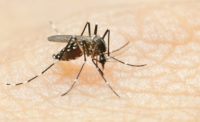Early in the science fiction thriller Ex Machina, Nathan Bateman, the brilliant and unnerving CEO of a successful software company, says to his star programmer, “Over the next few days, you're going to be the human component in a Turing test.” Despite the ominous sound of Bateman’s statement, intensified by his underground laboratory’s location on a remote mountain, the Turing test is relatively simple. Developed in 1950 by artificial-intelligence pioneer Alan Turing, the test measures a machine’s ability to exhibit intelligent behavior similar to that of humans. It involves two people and one machine, with one person observing and evaluating the machine’s interactions with the other person.
Of course, the movie is pure fantasy, but the entry of robots into the modern workplace is real. At the National Institute for Occupational Safety and Health (NIOSH), where protecting workers from workplace hazards is paramount, researchers are taking a proactive approach to prevent injuries among workers who share the workplace with robots. In a recent paper published in the peer reviewed Journal of Occupational and Environmental Hygiene, researchers identified three categories of robots in the workplace—industrial; professional and personal service; and collaborative—and made four recommendations that occupational safety and health professionals can take to protect workers:
1. They should be directly involved in developing international standards aimed at ensuring safety of workplaces with human and robot workers.
2. They should develop workplace safety standards for maintenance, operation, and interaction with human workers, of professional, personal service, and collaborative (including managerial) robots.
3. They should develop proactive approaches for establishing risk profiles of robotic workplaces.
4. They should develop and operationalize redundant safety measures to protect human workers who perform maintenance tasks on robot workers.
As with any new technology, protective measures like these are critical to prevent workplace injuries. Although reports of work-related injuries from robots are few, they can happen. Most recently, in June 2015, a third-party contracting employee installing an industrial robot at a Volkswagen assembly line in Baunatal, Germany, died when the robot gripped and pressed him against a metal plate, crushing his chest. What caused the malfunction remains unclear. Earlier, a widely cited 1987 paper reported less serious, but nonetheless worrisome, injuries like pinches and impacts, with 23 among line workers, 6 among maintenance workers, and 3 among computer programmers. Most of these injuries stemmed from preventable human causes like poor workplace design and error.
To read the article, go to Working Safely with Robot Workers: Recommendations for the New Workplace.
To learn more, visit the NIOSH Science Blog: A Robot May Not Injure a Worker: Working Safely with Robots.



